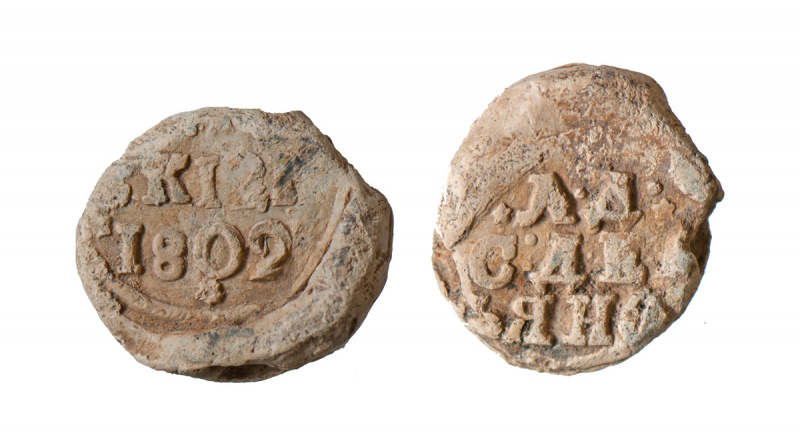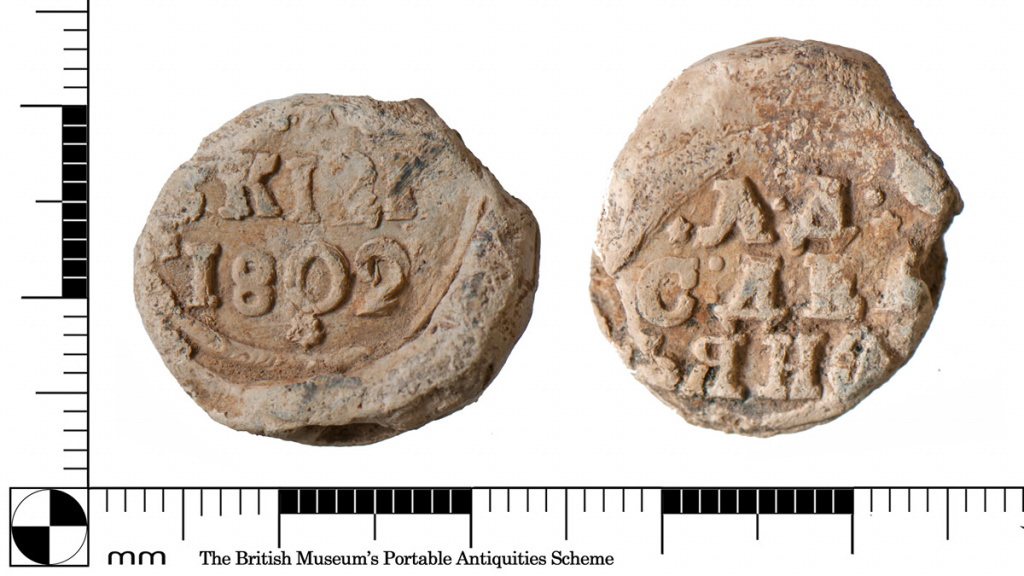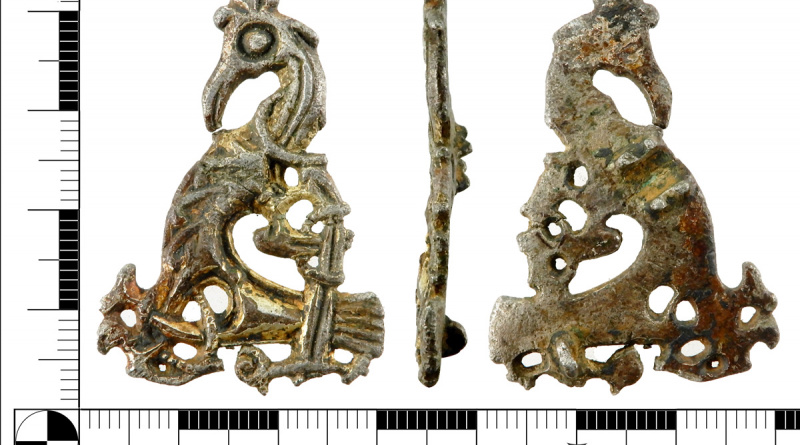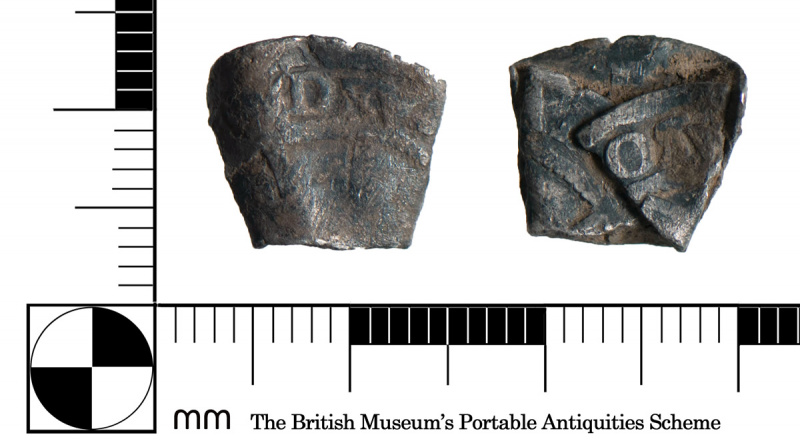PAS Finds (w/e 29/9/23) – Russian flax seal
My selection of the detecting finds that were recorded at the PAS in the week ended 29 September 2023.
Featured Find
Russian Flax Seal
A lead alloy Russian bale seal, dated 1802, which would have been fixed to a bale of flax to affirm its quality.
Brak
In 1712, Peter the Great introduced a system of quality control for export goods which was known as brak. It was intended to combat the extensive bribery and corruption at the time.1
A 19th century account described the work of the brackers:
“As soon as the hemp is brought down in the Spring, or in the course of the Summer, it is selected and made up in bundles; both operations being performed by sworn selectors (brackers) appointed by government for this purpose; and it is a well known fact, that this is done with great impartiality and exactness” 2
Bale Seal
The brackers would attach a seal to the bales of flax or hemp. After the flax had been imported into Britain, they would be discarded with the woody part of the stem, which was mixed with manure and spread on the fields. Hence, they are common detecting finds in areas that had a flax industry.
The seal contained information on the inspector, quantity of goods, date and tax status in Cyrillic. If the side with the date is considered the reverse, let’s start with the obverse
Obverse
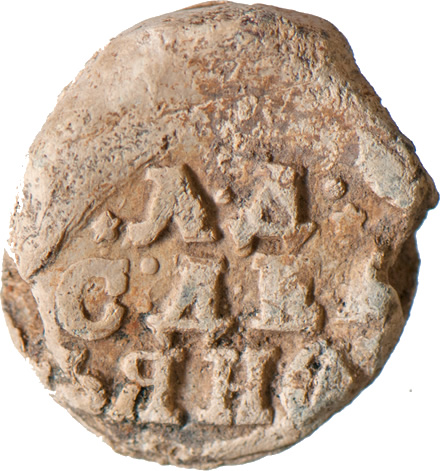
The first line is ЛД = LD L’nyanoy Dosmotr who was the main officer for flax inspection. I’ve seen seals with his initials on from 1790 through to 1839. That also tells us that this is a seal from St Petersburg.
The second and third line read C: ДE / bЯHO giving the initial and surname of the Quality Control Officer, S. Dem’ianov.
If the fourth line were visible, it would give a reference number for the Quality Control Officer.
Reverse
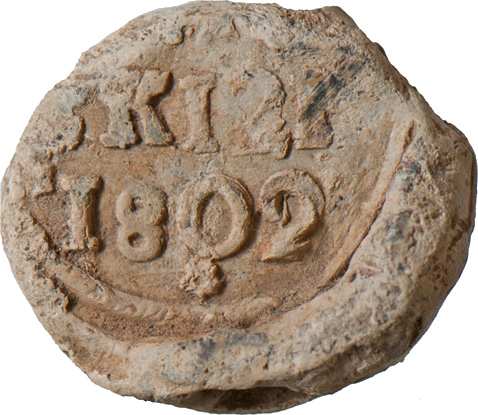
The top visible line shows the initials of the grower followed by a 12 for the number of heads in the bale.
The last line gives the date of inspection.
The missing line at the top would show which to which customs tax was paid; either SPB for St Petersburg or NP for Narva.
References
- Lead seals of Russian origin in Fife
- A Dictionary, Practical, Theoretical and Historical of Commerce and Commercial Navigation. J. R. McCulloch 1869.

